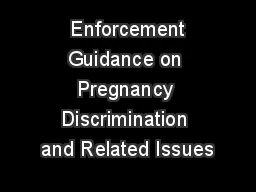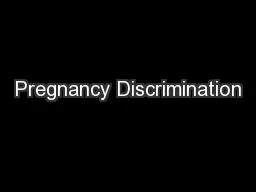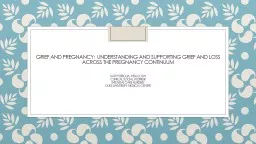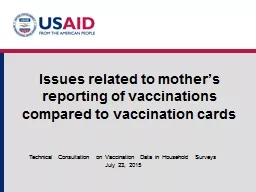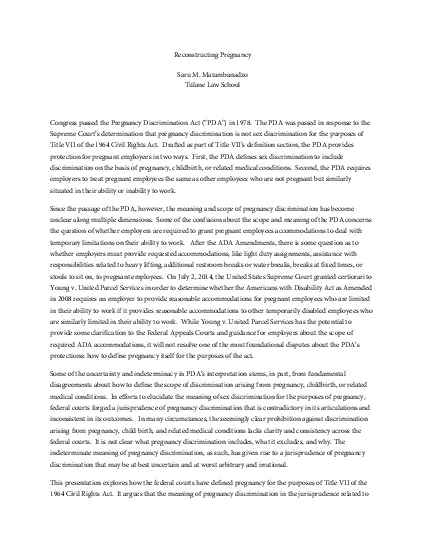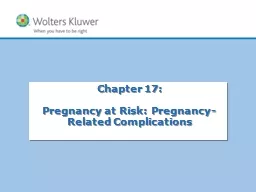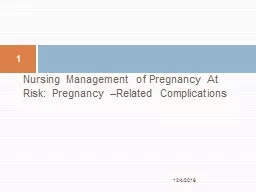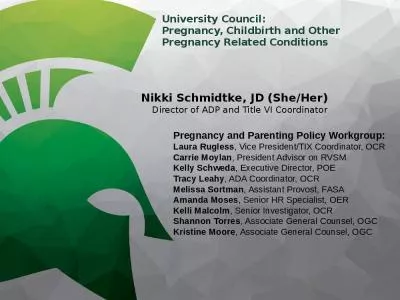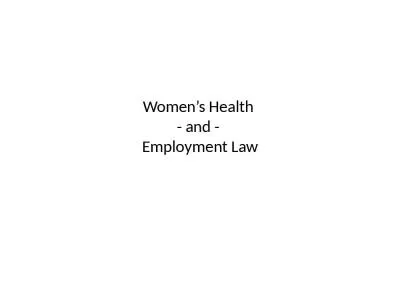PPT-Enforcement Guidance on Pregnancy Discrimination and Related Issues
Author : tatyana-admore | Published Date : 2020-04-05
Peggy Mastroianni Legal Counsel EEOC July 2014 1 Pregnancy Issues and the Strategic Enforcement Plan One of the six national priorities identified in Strategic
Presentation Embed Code
Download Presentation
Download Presentation The PPT/PDF document " Enforcement Guidance on Pregnancy Discr..." is the property of its rightful owner. Permission is granted to download and print the materials on this website for personal, non-commercial use only, and to display it on your personal computer provided you do not modify the materials and that you retain all copyright notices contained in the materials. By downloading content from our website, you accept the terms of this agreement.
Enforcement Guidance on Pregnancy Discrimination and Related Issues: Transcript
Download Rules Of Document
" Enforcement Guidance on Pregnancy Discrimination and Related Issues"The content belongs to its owner. You may download and print it for personal use, without modification, and keep all copyright notices. By downloading, you agree to these terms.
Related Documents

